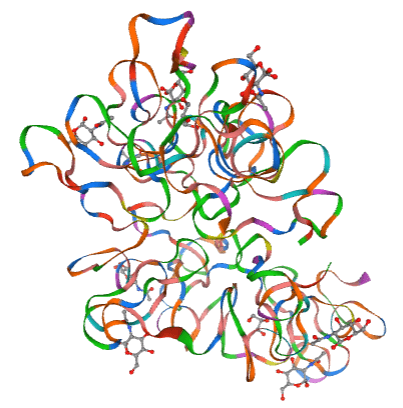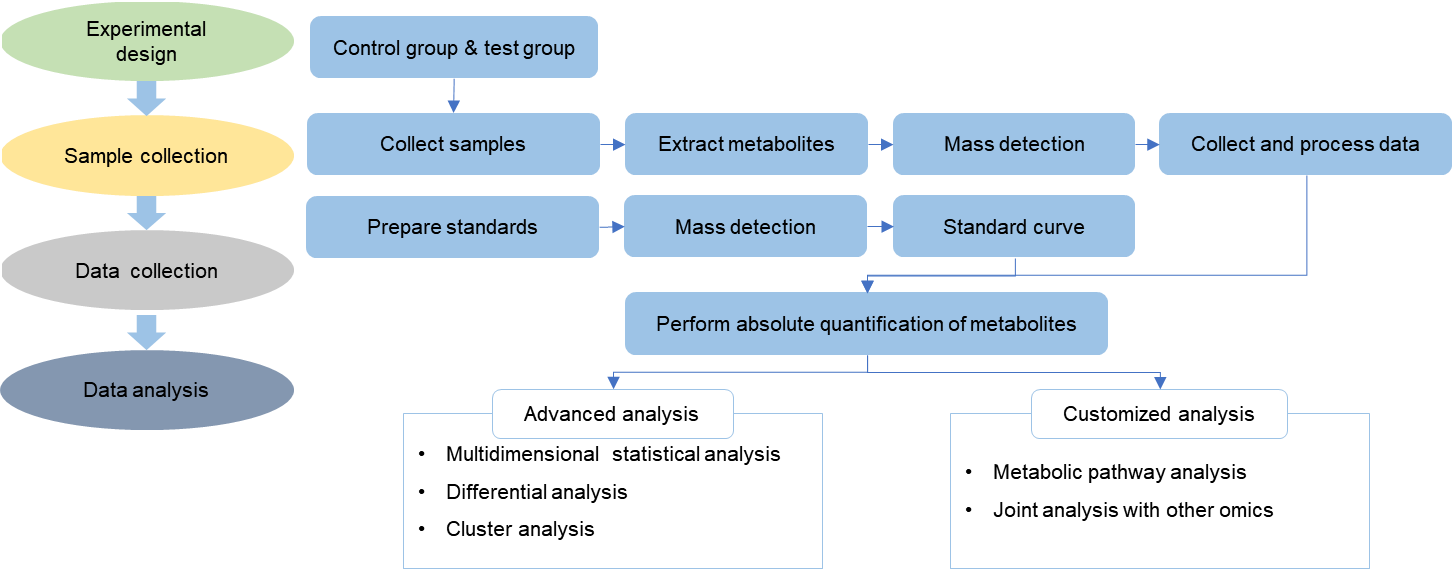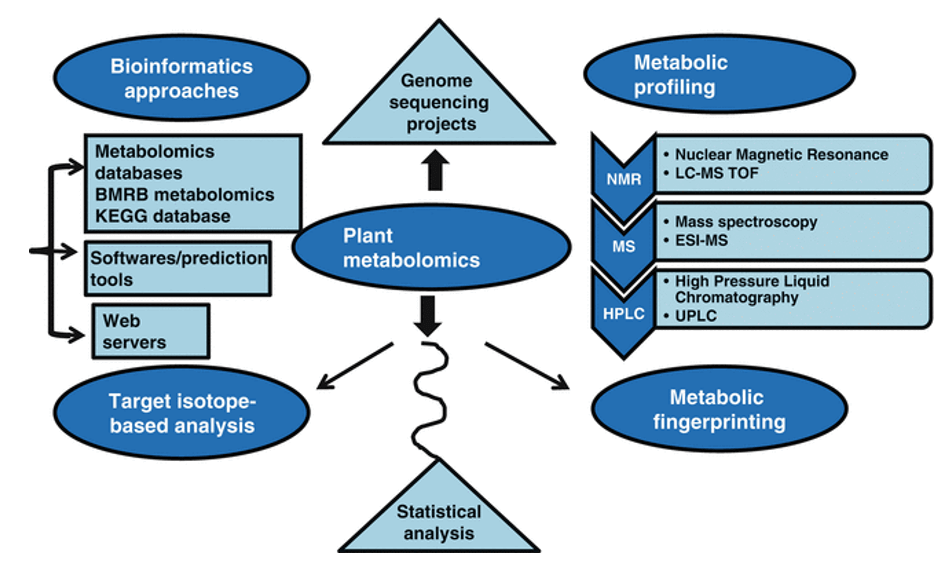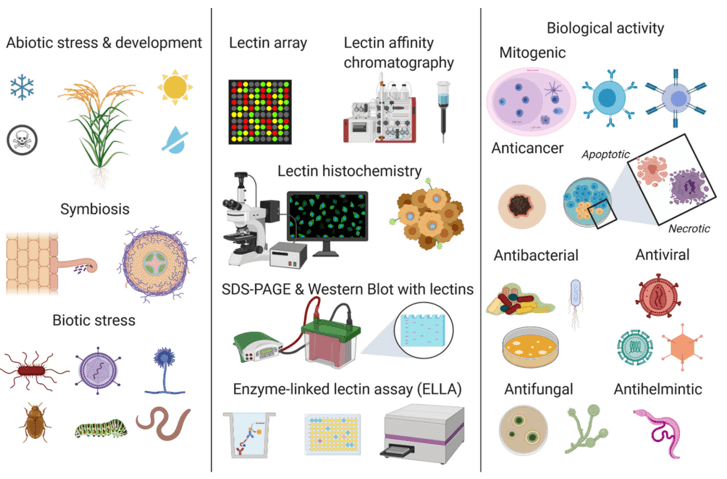Wheat Germ Agglutinin (WGA) Analysis Service
Submit Your InquiryWhat is Wheat Germ Agglutinin?
Wheat germ agglutinin is a lectin derived from wheat (Triticum aestivum) that has been widely studied for its ability to agglutinate and bind to specific sugar residues present on glycoproteins and glycolipids. Lectins are proteins or glycoproteins that have the ability to bind specifically to carbohydrates, and WGA is one of the most extensively characterized lectins.
WGA is composed of four identical subunits, each containing a carbohydrate-binding domain. Its binding specificity allows it to interact with terminal GlcNAc residues and sialic acid residues, which are abundant on the cell surface of various organisms. The binding of WGA to these carbohydrates can be attributed to its affinity for glycan structures and its unique lectin properties.
 Schematic diagram of WGA structure
Schematic diagram of WGA structure
Wheat Germ Agglutinin Assay at Creative Proteomics
Creative Proteomics offers a comprehensive wheat germ agglutinin assay service to assist you in your research. We are equipped with high-performance liquid chromatography (HPLC), mass spectrometry (MS), and advanced glycan analysis platforms for the analysis and characterization of WGA interactions. By employing these techniques, Creative Proteomics can provide valuable insights into the binding affinity, specificity and glycan recognition patterns of WGAs.
Creative Proteomics offers a wide range of WGA analysis capabilities, enabling researchers to explore the intricate details of WGA-carbohydrate interactions. Some of the key analyses provided by Creative Proteomics include:
Glycan Analysis:
Glycan analysis allows you to identify the specific carbohydrate structures recognized by WGA. By analyzing the composition and linkage patterns of sugars, you can gain insight into the biological functions and roles of WGA in different cellular processes.
Conjugation Studies:
Binding studies to investigate the binding affinity and kinetics of WGA to different glycan structures provide information on the binding specificity of WGA and its potential applications in targeted drug delivery, cellular imaging and glyco-engineering.
Glycomics Analysis:
Comprehensive analysis of the glycan structures present in complex biological samples helps to understand the changes in glycan profiles associated with various diseases and biological processes, providing potential therapeutic targets for drug discovery and development.
Structural Analysis:
Mass spectrometry is used to elucidate the structural features of WGAs and their interactions with carbohydrates, providing information on the binding sites, conformational changes and three-dimensional structure of WGAs.
Technical Route of Wheat Germ Agglutinin Analysis

Sample Requirements of Wheat Germ Agglutinin Assay
| Sample Type | Sample Volume | Sample Concentration |
|---|---|---|
| Cell Culture | ≥ 1 x 106 cells | Cell pellet or lysate |
| Tissue | ≥ 50 mg | Homogenized tissue |
| Serum/Plasma | ≥ 100 µl | Depleted or purified |
| Glycoproteins | ≥ 10 µg | Purified glycoprotein |
| Glycolipids | ≥ 10 µg | Purified glycolipid |
| Glycans | ≥ 100 pmol | Purified glycan |
Our Wheat Germ Agglutinin Assay can be applied to:
Cell Biology: The WGA assay is commonly employed in cell biology research to investigate cell surface glycosylation patterns. By specifically binding to carbohydrate structures on the cell membrane, it enables the detection and visualization of these structures, offering insights into cell adhesion, migration, and signaling processes.
Glycobiology: In glycobiology studies, the WGA assay plays a significant role. It allows for the characterization and analysis of glycan structures on proteins and lipids by binding to specific carbohydrate moieties. This aids in understanding the roles of glycans in various cellular processes, such as protein folding, trafficking, and interactions.
Glycoprotein Analysis: Researchers use the WGA assay to explore glycoproteins and their glycan modifications. It enables the identification and quantification of specific glycosylation patterns on glycoproteins, contributing to the comprehensive characterization of protein glycosylation profiles and their functional implications.
Glycolipid Analysis: The WGA assay is utilized for the analysis of glycolipids, which are crucial components of cell membranes. By binding to specific glycolipid structures, it allows researchers to identify and analyze glycolipid profiles, shedding light on their involvement in cell adhesion, signaling, and membrane organization.
Glycan Profiling: The WGA assay facilitates glycan profiling, providing researchers with information about the specific carbohydrate structures recognized by WGA. Through this analysis, researchers can identify and quantify glycan compositions, linkages, and modifications, thereby gaining valuable insights into glycan-mediated biological processes.
Glycoengineering: Researchers leverage the WGA assay in glycoengineering studies aimed at modifying glycan structures on proteins or cells. By understanding the binding specificity of WGA, they can design strategies to manipulate glycosylation patterns. This has applications in improving therapeutic protein stability, enhancing antibody effector functions, and engineering glycan-based vaccines.
Plant Biology: The WGA assay finds utility in plant biology research as well. It helps study glycan structures and their roles in plant development, defense mechanisms, and interactions with pathogens or symbiotic organisms.









